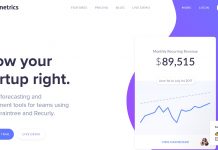AI in Cybersecurity: How Startups Can Stay Ahead of Hackers
Introduction
In today’s digital-first economy, cybersecurity is no longer a background issue reserved for large corporations. Startups, often operating with limited resources but handling valuable intellectual property and sensitive customer data, have become prime targets for hackers. The stakes are high: a single breach can wipe out customer trust, derail investment opportunities, and in many cases force a young business to shut down entirely. This is why the relationship between artificial intelligence and cybersecurity has emerged as one of the defining battlegrounds of our era.
The concept of AI in cybersecurity has rapidly shifted from theory to practice. Once considered futuristic, AI-powered tools are now essential to defend against the growing complexity of threats. Cybercriminals are not only more numerous but also more sophisticated, frequently leveraging automation and machine learning to launch attacks at a scale and speed that human defenders alone cannot counter. In this context, startups cannot afford to see AI in cybersecurity as optional. Instead, it has become a necessity for survival and a strategic advantage for growth.
The Startup Cybersecurity Dilemma
Startups face a unique set of challenges when it comes to security. Unlike established enterprises, they do not typically have entire departments dedicated to IT and defense. Budgets are tight, talent is scarce, and priorities are often focused on growth, product development, and fundraising. This leaves cybersecurity as an afterthought. Unfortunately, hackers know this all too well. Research from Verizon’s Data Breach Investigations Report shows that small businesses account for nearly 40 percent of reported cyberattacks each year, with many of these incidents targeting young companies.
For a hacker, breaching a startup can be just as lucrative as attacking a corporation. Startups may handle sensitive financial data, proprietary code, or customer records that can be sold on the black market. At the same time, a startup’s lack of layered defenses makes it easier to exploit vulnerabilities. This dynamic creates a dangerous imbalance where the very agility that defines a startup also becomes its weakness in the face of cyber threats.
The Role of Artificial Intelligence
Artificial intelligence is changing this equation. AI in cybersecurity allows startups to fight back with systems that learn, adapt, and respond at machine speed. Rather than relying solely on human analysts who can be overwhelmed by thousands of alerts daily, AI can sift through massive data streams, identify unusual patterns, and prioritize the most urgent threats. This not only reduces the burden on small teams but also levels the playing field against attackers who themselves are using AI.
Key applications of AI in cybersecurity include anomaly detection, predictive analytics, automated incident response, and threat intelligence sharing. Together, these tools provide startups with an advanced defensive shield that would have been unimaginable even a decade ago. The ability to predict, prevent, and respond to attacks in near real time gives startups a fighting chance to protect their assets without draining their limited resources.
Cybersecurity as a Growth Driver
While cybersecurity is often viewed as a cost center, for startups it can also be a growth driver. Investors, partners, and customers increasingly demand evidence that data will be protected. Demonstrating a proactive approach to AI in cybersecurity can differentiate a startup in a crowded market. It signals professionalism, foresight, and responsibility—qualities that resonate strongly with stakeholders.
For instance, a startup applying AI-driven monitoring to protect customer transactions can use this as a selling point in its marketing. By positioning security not just as protection but as part of the value proposition, startups can build trust that translates into higher retention and faster adoption. In industries such as fintech, health tech, or e-commerce, this trust can mean the difference between scaling successfully and being overlooked.
The Global Context
The rise of AI in cybersecurity must also be understood in a global context. Cybercrime has become a multi-trillion-dollar industry, with state-sponsored actors, organized crime groups, and opportunistic hackers all competing in the same arena. The digitization of nearly every aspect of life—from finance to healthcare to supply chains—means that vulnerabilities anywhere can have ripple effects everywhere.
Startups, especially those with ambitions to scale internationally, cannot afford to rely on minimal defenses. They must design systems capable of meeting not only local risks but also global standards. AI provides the tools to bridge this gap. By integrating AI-driven defenses, startups can align with international best practices, giving them credibility in global markets and resilience against threats that transcend borders.
Why Timing Matters
One of the biggest mistakes startups make is delaying investment in security until after growth milestones are reached. This reactive mindset often results in breaches that could have been prevented with minimal effort upfront. Timing is critical because hackers often strike when startups are most vulnerable—during product launches, funding rounds, or rapid scaling phases.
AI in cybersecurity allows startups to embed protection from the beginning. By adopting intelligent security tools early, companies avoid costly retrofits later. Just as important, early adoption allows AI systems to gather data and improve over time, becoming more accurate and effective as the startup grows. The earlier a startup embraces AI in cybersecurity, the stronger its long-term resilience will be.
Setting the Stage for Exploration
This article will dive deep into how AI in cybersecurity is transforming the way startups defend themselves against hackers. We will explore the evolving threat landscape, the dual role of AI as both a weapon and shield, the practical applications of AI-driven defense, and the challenges startups must navigate to implement these systems effectively. We will also examine cost-effective tools available to early-stage companies, strategies for building a culture of cybersecurity, and the future trends shaping the next generation of digital defense.
By the end, it will be clear that cybersecurity is not just about avoiding loss but about creating the conditions for sustainable growth. For startups, the question is no longer whether to adopt AI in cybersecurity, but how quickly and strategically they can integrate it into their DNA.
The Evolving Cyber Threat Landscape
The Growing Scale of Cyberattacks
Cybersecurity threats have increased in both frequency and complexity over the last decade. What once were isolated incidents carried out by individual hackers have evolved into highly organized operations. State-sponsored groups, professional cybercriminal organizations, and automated attack systems now dominate the landscape. For startups, this shift means that they are not simply facing lone opportunists but entire ecosystems of adversaries.
The global cost of cybercrime is projected to reach more than 10 trillion dollars annually by 2025, according to Cybersecurity Ventures. This figure reflects not only direct financial losses but also the cascading impacts of downtime, regulatory fines, and reputational damage. Startups, with their limited defenses, are seen as entry points for larger attacks or as easy sources of data to sell on dark markets. The sheer scale of this industry underscores why AI in cybersecurity is becoming central to modern defense strategies.
Targeting Startups as Weak Links
Hackers frequently target startups because they assume these companies lack robust security. While larger enterprises can invest in layers of defenses, startups often prioritize speed, innovation, and fundraising over protection. Hackers exploit this imbalance by focusing on small businesses as weak links. Once compromised, startups can be used as stepping stones to larger networks, especially if they serve enterprise clients or handle sensitive customer data.
For example, supply chain attacks have become more common in recent years. In these scenarios, hackers infiltrate a small vendor and use that access to compromise a larger partner. Startups in software development, logistics, or digital services are particularly vulnerable. AI in cybersecurity offers startups the chance to break this pattern by implementing defenses strong enough to deter attackers before they can leverage these weak points.
AI-Powered Threats on the Rise
A significant development in the current landscape is the use of AI by hackers themselves. Malicious actors now deploy machine learning to make their attacks smarter and harder to detect. Phishing campaigns, once clumsy and easy to spot, are now refined with natural language processing that mimics legitimate communication styles. These AI-generated messages increase the success rate of scams, making employees more likely to fall for them.
Hackers also use AI to design malware capable of adapting to defenses. These self-learning malicious programs evolve as they encounter barriers, bypassing traditional antivirus systems. Brute force attacks have similarly become more efficient, with AI-driven tools capable of testing millions of password combinations in minutes. Without adopting AI in cybersecurity, startups risk being outpaced by these intelligent and adaptive threats.
Regulatory Pressures Intensify
Another dimension of the threat landscape is regulatory pressure. Governments worldwide are tightening data protection laws in response to increasing cybercrime. Regulations like the General Data Protection Regulation (GDPR) in Europe, the California Consumer Privacy Act (CCPA) in the United States, and emerging frameworks in Asia demand that companies safeguard user data effectively.
For startups, non-compliance is more than a legal risk. It can severely damage investor confidence and customer trust. AI in cybersecurity helps startups meet these obligations by providing automated monitoring, logging, and reporting capabilities. Instead of struggling to manually prove compliance, startups can leverage AI-driven solutions that continuously track and secure sensitive information.
Human Factors as Ongoing Weaknesses
Even with advanced tools, human error remains one of the most common causes of breaches. Employees may click on malicious links, use weak passwords, or mishandle sensitive files. Startups with small teams often lack formal cybersecurity training, making them particularly susceptible to social engineering.
Hackers exploit this weakness by designing sophisticated AI-driven scams that trick employees into granting access. AI in cybersecurity can help by detecting unusual behaviors, such as logins from unusual locations or unexpected file transfers. However, without proper education and awareness, employees can still unintentionally undermine even the best defenses.
Remote Work Expands Attack Surfaces
The widespread adoption of remote work has expanded the attack surface for startups. Distributed teams rely heavily on cloud services, collaboration tools, and personal devices, all of which create potential vulnerabilities. Cybercriminals have adapted by targeting these platforms with credential theft, ransomware, and phishing schemes.
AI in cybersecurity provides visibility into this expanded digital environment. By monitoring traffic across devices, networks, and applications, AI tools identify irregular activity and flag risks that human teams might miss. For startups embracing remote or hybrid work models, these capabilities are essential to maintaining security in a borderless workplace.
The Cost of Inaction
Failing to respond to the evolving cyber threat landscape can be catastrophic. A data breach can cost startups an average of 3 million dollars, according to IBM’s 2024 Cost of a Data Breach Report. For many early-stage companies, such losses are unrecoverable. Beyond direct costs, breaches erode trust, delay funding rounds, and trigger regulatory scrutiny.
Startups that delay cybersecurity measures often find themselves forced into reactive spending after an incident, which is far more expensive than proactive investment. By embedding AI in cybersecurity strategies early, companies can avoid these reactive costs and build resilience into their operations from the ground up.
Why Startups Must Think Globally
The digital marketplace is global by default. Even if a startup begins with local operations, the internet connects it instantly to international customers and competitors. This global exposure means startups must defend against threats that originate from anywhere in the world. Hackers in one country can easily target small businesses across borders.
AI in cybersecurity equips startups to handle this reality. With AI-driven monitoring and predictive tools, companies can defend against threats regardless of origin. This not only strengthens security but also positions startups to expand confidently into global markets, knowing their defenses meet international standards.
AI as a Double-Edged Sword
How Hackers Exploit AI in Cybersecurity
While defenders see AI in cybersecurity as a shield, attackers increasingly see it as a weapon. Malicious actors now deploy artificial intelligence to make their operations faster, cheaper, and harder to detect. One of the most common uses is in phishing attacks. By using natural language processing, AI systems can generate emails that mimic the tone and style of real colleagues or partners. Instead of clumsy and obvious scams, these emails look professional, complete with personalized details that increase the chances of success.
AI in cybersecurity is also being misused to design malware that can mutate. These self-learning programs test and adapt their code to slip past antivirus software or firewalls. Each time defenders block one version, the malware generates another, making it extremely difficult to contain. This ability to evolve highlights why startups cannot rely solely on traditional security. Without intelligent defense, they face an adversary that learns as quickly as they innovate.
Another concerning development is the use of AI to analyze stolen data. Hackers no longer need to sift through massive files manually. AI tools can instantly sort and extract valuable information such as credit card numbers, passwords, or intellectual property. The speed at which stolen data can be monetized makes breaches even more dangerous for startups.
Defensive Power of AI in Cybersecurity
The same qualities that make AI dangerous in the wrong hands also make it invaluable for defense. AI in cybersecurity provides detection capabilities that are simply beyond human capacity. For example, anomaly detection algorithms can scan billions of data points in real time, identifying unusual login attempts or suspicious traffic. What might take analysts days to recognize can be spotted in seconds by AI.
Predictive analytics is another critical advantage. By analyzing historical attack patterns, AI in cybersecurity systems can forecast where and how a breach might occur. This enables startups to prepare defenses before an incident takes place. Predictive defense reduces downtime, prevents data loss, and minimizes the financial impact of attempted intrusions.
Automation adds yet another layer of strength. Many startups cannot afford 24-hour monitoring teams. AI-driven systems can automatically isolate infected devices, block malicious IP addresses, and alert teams only when human decision-making is necessary. This balance of automation and oversight makes security scalable even for companies with very small teams.
Comparing Traditional Security With AI-Based Defense
Traditional cybersecurity tools, while important, are often reactive. Antivirus programs, firewalls, and manual monitoring depend on known signatures and established rules. When hackers introduce new techniques, these tools struggle to keep up. By contrast, AI in cybersecurity continuously learns. It does not need to wait for a rule to be written; it identifies deviations from normal behavior and acts accordingly.
For startups, this distinction is critical. A young company cannot afford weeks of downtime or massive recovery costs after a breach. By using AI in cybersecurity, they gain proactive protection that adapts to new threats as they emerge. Instead of chasing attackers, they can stay one step ahead.
That said, startups must be realistic. AI-based systems are not perfect. They can generate false positives, sometimes flagging harmless activity as suspicious. Over-reliance on AI may also create blind spots if attackers design strategies specifically to confuse algorithms. This is why the most effective approach combines AI with human expertise, ensuring balance and accuracy.
The Startup Perspective: Risks and Opportunities
For startups, the double-edged nature of AI in cybersecurity represents both risk and opportunity. On one side, attackers armed with AI increase the pressure on small businesses that already struggle with limited defenses. On the other side, startups have access to affordable AI tools that empower them to compete with larger organizations on equal terms.
The key is adoption speed. Startups that move quickly to integrate AI in cybersecurity into their operations can transform a potential weakness into a strength. They can market their proactive approach to security as a value proposition, win investor confidence, and avoid costly breaches that sink competitors. Those that delay risk falling into the trap of reactive spending, where resources are wasted on damage control rather than growth.
In this sense, AI in cybersecurity is not only a defensive necessity but also a strategic differentiator. A startup that demonstrates resilience against modern threats positions itself as trustworthy and forward-thinking. In markets where customer trust is paramount, this can be a decisive advantage.
Core Applications of AI in Cybersecurity
Threat Detection at Machine Speed
The most recognized advantage of AI in cybersecurity is its unmatched ability to detect threats at machine speed. Traditional monitoring relies on human analysts or fixed rules. Hackers often bypass these systems by introducing variations in their attacks. AI changes the game by continuously learning what normal behavior looks like across networks, endpoints, and applications.
For example, an AI-driven system can detect that an employee usually logs in from New York at 9 a.m., but suddenly there is a login attempt from another continent at 3 a.m. The AI instantly recognizes this as abnormal and flags or blocks the attempt before any harm is done. This type of anomaly detection is a core function of AI in cybersecurity, allowing startups to detect issues early and minimize risks.
Predictive Analytics for Future-Proof Defense
One of the most powerful features of AI in cybersecurity is predictive analytics. Instead of reacting to attacks after they happen, predictive systems analyze patterns, behaviors, and known threat data to anticipate potential breaches. This means startups can shift from a defensive posture to an anticipatory one.
For instance, AI systems can detect early indicators of ransomware attacks, such as unusual file modifications or encrypted communications. With this predictive insight, a startup can shut down affected systems or alert users before the ransomware spreads across the network. Such foresight can mean the difference between a minor disruption and a catastrophic loss.
Automating Repetitive Security Tasks
Startups often operate with lean teams, where every second counts. AI in cybersecurity shines by automating repetitive and time-consuming tasks. Activities like scanning for vulnerabilities, updating security patches, or blocking suspicious IP addresses no longer need to be handled manually.
This automation frees up human experts to focus on strategy and higher-level decision-making. It also ensures consistency, reducing the chance of human error that can create security gaps. For startups, automation makes world-class security achievable without the expense of hiring large, specialized teams.
Endpoint Protection in Remote Work Era
With the rise of remote work, endpoints such as laptops, smartphones, and tablets have become prime targets for hackers. AI in cybersecurity enhances endpoint protection by monitoring these devices for unusual activity. Instead of relying solely on antivirus software, AI tools continuously analyze behavior patterns, ensuring even subtle signs of compromise are detected.
This capability is especially important for startups with distributed teams. Remote employees may connect from unsecured networks, making them more vulnerable. AI ensures that regardless of where employees are, their devices remain protected by real-time monitoring and automated response systems.
Real-Time Incident Response
In the past, responding to a breach could take days or weeks. By that time, attackers might have stolen data, planted backdoors, or caused major disruptions. AI in cybersecurity reduces response times to seconds. When a suspicious action is detected, AI systems can automatically quarantine affected devices, block malicious traffic, and alert human operators.
This instant containment limits damage and prevents attackers from moving laterally within a network. For startups, which may not have the resources for 24/7 monitoring, real-time response powered by AI is a critical safeguard that levels the playing field against well-funded attackers.
Fraud Detection in Digital Transactions
Many startups operate in industries where financial transactions are central, such as fintech, e-commerce, and SaaS. Fraudulent activity can devastate a business and erode customer trust. AI in cybersecurity excels at detecting fraud by analyzing transaction patterns in real time.
For example, if a customer suddenly makes unusually large purchases or initiates payments from a new device, AI systems flag these actions as potentially fraudulent. By stopping fraudulent transactions before they are completed, startups not only save money but also protect their reputation. This type of AI-driven fraud detection is becoming a standard requirement for businesses that operate online.
Securing Cloud Environments
Cloud adoption has exploded among startups because it offers scalability and reduced costs. However, the cloud also introduces unique security challenges. AI in cybersecurity helps manage these risks by monitoring cloud environments for misconfigurations, unauthorized access, and unusual data transfers.
Cloud AI systems provide visibility across hybrid infrastructures, where data moves between on-premises servers, public clouds, and third-party platforms. This visibility is crucial for startups that depend on agility but cannot afford costly breaches. With AI, startups can embrace the cloud confidently, knowing they have intelligent monitoring in place.
Identity and Access Management
Another key application of AI in cybersecurity is identity and access management (IAM). Startups must ensure that only the right people have access to sensitive information. AI enhances IAM by analyzing behavior to detect suspicious access patterns.
For example, if an employee who usually accesses only sales data suddenly attempts to view confidential financial records, AI will flag this as a potential insider threat. Adaptive authentication, powered by AI, can also require additional verification steps when unusual access attempts are detected. This prevents unauthorized use of credentials and strengthens overall security.
Enhancing Security Awareness Training
Human error remains one of the biggest vulnerabilities in cybersecurity. Phishing emails, weak passwords, and careless data handling all create openings for attackers. AI in cybersecurity is now being used to personalize security training for employees.
Instead of generic courses, AI tailors training based on employee behavior. If an employee frequently clicks on suspicious links, the AI system may deliver targeted modules about phishing awareness. This adaptive learning ensures that employees strengthen their weak spots, turning them into a stronger line of defense.
Integrating AI With Existing Security Infrastructure
Startups often worry that adopting AI requires replacing all their existing tools. In reality, AI in cybersecurity is most effective when integrated with current infrastructure. Tools such as SIEM (Security Information and Event Management) platforms, firewalls, and endpoint detection systems can all be enhanced by AI plugins or modules.
This layered approach ensures startups get the best of both worlds: the reliability of proven tools and the intelligence of AI. Integration also allows for gradual adoption, which is more affordable and less disruptive for young businesses.
Challenges and Limitations of AI in Cybersecurity
The Cost Barrier for Startups
While AI in cybersecurity offers transformative advantages, one of the first obstacles startups face is cost. High-quality AI-driven security tools can be expensive, requiring subscription fees, infrastructure, and sometimes specialized hardware. For a small business or early-stage startup, these costs may feel overwhelming.
Even when affordable AI solutions exist, startups may struggle with implementation costs such as training staff or integrating the tools with existing systems. The reality is that attackers do not wait until a company has the budget to defend itself. This financial challenge makes prioritization essential. Many startups must find a balance between leveraging AI in cybersecurity and managing limited resources.
Dependence on High-Quality Data
AI systems are only as strong as the data that trains them. For AI in cybersecurity to accurately detect threats, it must be fed large volumes of relevant, high-quality data. Startups may not have access to such extensive datasets, which can limit the effectiveness of their AI-driven defenses.
If the data is incomplete, biased, or outdated, AI systems can make incorrect decisions, leading to false positives or missed threats. For example, if an AI model has not been trained on the latest phishing techniques, it may fail to recognize them. This highlights a critical limitation: AI in cybersecurity requires constant updates and access to real-world threat intelligence, which not every startup can afford.
False Positives and Alert Fatigue
One of the most common issues with AI-driven security tools is false positives. While detecting threats aggressively is important, too many false alarms can overwhelm small security teams. If a startup’s AI in cybersecurity system flags hundreds of suspicious activities each day, many of which turn out to be harmless, employees may begin to ignore alerts altogether.
This phenomenon, known as alert fatigue, reduces the effectiveness of security systems. Hackers can exploit this by launching distractions or decoy attacks, hoping that real threats will slip through unnoticed. For startups with limited staff, finding the right balance between sensitivity and accuracy is essential.
Adversarial Attacks Against AI
A lesser-known but increasingly dangerous challenge is the rise of adversarial attacks, where hackers deliberately manipulate AI systems. By introducing carefully crafted inputs, attackers can trick AI into misclassifying threats or ignoring malicious activity.
For example, attackers might modify malware code in subtle ways that make it invisible to AI detection models. This type of attack directly exploits the strengths of AI in cybersecurity, turning them into vulnerabilities. Startups must understand that AI is not foolproof and must be reinforced with human oversight and traditional security measures.
Lack of Skilled Personnel
Implementing AI in cybersecurity is not just about purchasing tools; it requires expertise to configure, manage, and interpret them. Skilled AI and cybersecurity professionals are in high demand and often command high salaries. Startups may not have the budget to hire such experts, leaving them at risk of misusing or underutilizing the technology.
This talent gap can cause startups to depend heavily on vendors or outsourced providers. While managed services can be helpful, they also introduce dependency and sometimes slow response times. Without in-house knowledge, startups risk being less agile in responding to new and evolving threats.
Integration Challenges With Legacy Systems
Not all startups operate entirely on new infrastructure. Some rely on legacy systems inherited from early development stages or acquired through partnerships. Integrating AI in cybersecurity with outdated or non-standard systems can be complex and time-consuming.
Compatibility issues may arise, requiring costly customization. In some cases, startups may even be forced to replace older systems entirely to make use of AI-driven tools. This integration challenge creates friction, particularly for businesses already stretched thin by operational demands.
Over-Reliance on Automation
Another major risk is over-reliance on automation. Startups may be tempted to let AI in cybersecurity handle everything, assuming the system will detect and respond to every threat. However, hackers are constantly innovating, and AI systems cannot anticipate every possible attack vector.
Relying solely on automation may leave startups blind to sophisticated or novel threats. Human intuition, creativity, and strategic thinking remain essential. AI should be seen as an ally that strengthens defenses, not as a replacement for human security professionals.
Ethical and Privacy Concerns
AI in cybersecurity often involves collecting and analyzing large amounts of user data. While this is effective for detecting anomalies, it raises concerns about privacy. Startups must navigate complex regulatory environments such as GDPR in Europe or CCPA in California, ensuring that their use of AI does not violate data protection laws.
There is also an ethical dimension. Employees or customers may feel uncomfortable knowing that their behavior is constantly monitored by AI. Without proper communication and transparency, businesses risk losing trust. Balancing security with privacy is a delicate challenge that startups must handle responsibly.
Rapid Evolution of Threats
Hackers adapt quickly. Every time AI in cybersecurity evolves, attackers look for ways to bypass it. This arms race means that startups must continuously update their tools, retrain their models, and invest in threat intelligence. Falling behind even briefly can leave gaps that attackers exploit.
The dynamic nature of cyber threats makes AI implementation an ongoing process rather than a one-time solution. For resource-constrained startups, keeping up with this pace can be particularly demanding.
Vendor Dependency and Lock-In
Many startups adopt third-party AI in cybersecurity tools rather than developing their own. While this accelerates adoption, it also creates vendor dependency. If the vendor changes pricing, discontinues a product, or suffers a breach themselves, the startup is directly affected.
Vendor lock-in can also make it difficult to switch providers if the solution no longer meets the company’s needs. Negotiating flexibility and ensuring transparency in vendor agreements are crucial steps for startups seeking long-term security.
Best Practices for Implementing AI in Cybersecurity
Begin With a Clear Security Strategy
Startups often rush into adopting new technologies without first defining their security goals. The same mistake can occur with AI in cybersecurity. Before investing in any AI-driven tools, startups should map out their security priorities.
Questions to consider include: What are the most valuable digital assets? Which types of attacks are most likely? How much downtime can the business afford? With these answers, startups can build a targeted strategy where AI in cybersecurity complements existing defenses rather than creating unnecessary complexity. A well-defined roadmap ensures that AI investments align with real business needs instead of being adopted just because they are trendy.
Combine AI With Traditional Security Layers
AI in cybersecurity is powerful, but it should not stand alone. Traditional defenses such as firewalls, intrusion detection systems, and antivirus software remain essential. By combining AI with these tools, startups create a multi-layered defense that increases resilience.
For example, AI might identify anomalies in traffic behavior, while a firewall blocks unauthorized access attempts. If malware bypasses one defense, another layer can still intercept it. This “defense in depth” approach is especially critical for startups, where a single breach could have devastating consequences.
Train AI With Quality Data
The effectiveness of AI in cybersecurity depends heavily on the data it is trained with. Startups should prioritize collecting and curating relevant data, whether through logs, historical incidents, or partnerships with security providers. Clean, structured, and updated datasets improve the accuracy of AI models and reduce false positives.
Startups can also take advantage of shared threat intelligence platforms, where organizations exchange data on new malware, phishing tactics, and attack patterns. By leveraging these networks, startups can strengthen their AI systems without having to build massive datasets from scratch.
Start Small and Scale Gradually
Trying to implement AI across all aspects of cybersecurity at once can overwhelm a startup. A more practical approach is to begin with one or two targeted use cases. For example, startups might first apply AI to phishing detection or anomaly detection in network traffic.
Once the system proves reliable, they can expand its scope to cover additional areas such as fraud detection, insider threat monitoring, or predictive analytics. Scaling gradually allows teams to build confidence, learn from experience, and optimize investments without unnecessary risks.
Maintain Human Oversight
While AI in cybersecurity can automate detection and response, human judgment is still vital. Startups should establish processes where AI-generated alerts are reviewed by security personnel before major actions are taken. This prevents mistakes such as shutting down legitimate services or blocking real customers.
Humans also bring creativity and intuition, which machines lack. Attackers often exploit psychological tricks, like spear-phishing emails tailored to specific employees. AI may miss the context, but human oversight ensures these threats are not ignored. The partnership between AI and human intelligence creates a balanced, reliable defense.
Regularly Update and Retrain Models
Cyber threats evolve rapidly, and AI models must evolve with them. Startups should establish a routine for updating and retraining their AI in cybersecurity systems. This may involve feeding them new datasets, adjusting algorithms, or patching vulnerabilities.
Failing to update models can leave gaps that hackers exploit. For instance, if a model has not been trained on the latest ransomware techniques, it may allow infections to slip through. Continuous updates ensure that AI defenses remain relevant and effective against emerging threats.
Address False Positives Proactively
High false-positive rates are one of the biggest challenges with AI in cybersecurity. Startups can reduce this problem by fine-tuning thresholds, training models on more accurate data, and combining AI with rule-based systems.
Creating a feedback loop is also essential. Every time an alert turns out to be a false positive, it should be fed back into the system to improve accuracy. Over time, this learning process reduces noise, enabling teams to focus on genuine threats.
Protect Against Adversarial Attacks
Hackers are increasingly designing attacks to confuse or deceive AI systems. To counter this, startups must adopt robust testing methods. Simulating adversarial attacks in controlled environments helps identify weaknesses before they can be exploited.
Techniques such as adversarial training, where AI systems are deliberately exposed to manipulated inputs, can strengthen resilience. By preparing AI in cybersecurity for worst-case scenarios, startups ensure that their defenses do not collapse under real-world pressure.
Ensure Ethical and Legal Compliance
AI in cybersecurity often requires analyzing sensitive user data. Startups must comply with privacy regulations such as GDPR, HIPAA, or CCPA depending on their industry and region. Failure to respect legal requirements can result in heavy fines and reputational damage.
Ethical considerations are equally important. Transparency about how AI systems monitor and protect user data helps build trust. Startups should communicate clearly with employees and customers about what data is collected, why, and how it is used. Responsible implementation ensures that AI strengthens security without undermining privacy.
Build Partnerships With Trusted Vendors
Not every startup has the resources to develop AI in cybersecurity solutions in-house. Partnering with reputable vendors can provide access to cutting-edge tools, expertise, and support. However, startups must carefully vet vendors to avoid dependency risks or hidden vulnerabilities.
Key factors to evaluate include the vendor’s track record, transparency in data handling, and commitment to updates. Contracts should include clear exit options to prevent vendor lock-in. Collaborating with the right partners enables startups to gain the benefits of AI while minimizing risks.
Prioritize Employee Training
AI in cybersecurity cannot succeed without knowledgeable employees who know how to use it effectively. Startups should invest in training programs to help staff understand both the potential and the limitations of AI. Employees should learn how to interpret AI alerts, escalate issues, and integrate insights into daily operations.
A workforce that understands AI tools becomes an active participant in cybersecurity rather than a weak link. Training also fosters a culture of security awareness, where everyone contributes to protecting the business.
Monitor Performance and ROI
Adopting AI in cybersecurity should be treated like any other investment. Startups need to track performance metrics such as detection rates, false positive ratios, and response times. Equally important is measuring return on investment (ROI).
If AI tools reduce downtime, prevent data breaches, or free up staff time, the financial benefits can be significant. Regular reviews ensure that startups allocate resources wisely and maximize the value of their security strategies.
AI Tools and Solutions for Startups
Affordable AI in Cybersecurity Platforms
Startups often assume that advanced AI in cybersecurity is reserved for large enterprises with big budgets. However, a growing number of affordable platforms are now tailored specifically for small businesses. These platforms offer subscription-based pricing, cloud integration, and modular services that scale as the startup grows.
For example, some AI-driven security providers focus on endpoint protection, while others specialize in phishing detection or fraud prevention. By selecting platforms that target their most pressing risks, startups can protect themselves effectively without overspending. This flexibility allows even early-stage companies to access cutting-edge AI in cybersecurity without the need for heavy upfront investments.
Cloud-Based AI Security Solutions
Cloud adoption among startups has accelerated, and with it comes the need for cloud-native security. Cloud-based AI in cybersecurity solutions monitor data flows, detect misconfigurations, and prevent unauthorized access in real time. These systems offer the advantage of scalability—startups can expand their use of cloud services without worrying that security will lag behind.
Solutions like AI-enhanced cloud access security brokers (CASBs) provide visibility into cloud activity, enforce policies, and protect against risky behaviors. For startups that depend on public cloud providers like AWS, Google Cloud, or Azure, integrating AI-driven security ensures a balance between agility and protection.
Endpoint Detection and Response (EDR) Tools
Remote work and mobile teams are now standard in the startup world, making endpoints one of the most vulnerable entry points for cyberattacks. Endpoint Detection and Response (EDR) tools powered by AI continuously analyze activity on devices to detect malicious behavior.
These systems go beyond traditional antivirus software. They recognize unusual processes, suspicious downloads, or irregular user activity and respond in real time by isolating compromised devices. For startups without large IT teams, EDR solutions offer peace of mind, ensuring that laptops, smartphones, and tablets remain secure wherever employees work.
Managed Security Services With AI Capabilities
Not every startup can afford to hire in-house cybersecurity experts. Managed security service providers (MSSPs) with AI capabilities fill this gap. They offer round-the-clock monitoring, threat intelligence, and automated responses, allowing startups to outsource their security operations while still benefiting from AI-driven insights.
MSSPs can tailor their services to a startup’s needs, whether that means managing firewalls, monitoring cloud environments, or handling compliance reporting. By leveraging the expertise of MSSPs, startups can focus on growth while ensuring that AI in cybersecurity protects them behind the scenes.
Phishing and Email Protection Tools
Phishing remains one of the most common threats for startups. AI in cybersecurity offers specialized tools that analyze email content, sender reputation, and user behavior to block suspicious messages before they reach inboxes. These tools also adapt by learning from past incidents, becoming better over time at spotting fraudulent attempts.
For startups, email protection is especially critical because one successful phishing attack can expose sensitive data or compromise internal systems. By adopting AI-powered phishing defenses, businesses drastically reduce the likelihood of human error leading to a costly breach.
Fraud Detection and Transaction Security
For startups in fintech, e-commerce, and SaaS, fraud detection is a top priority. AI in cybersecurity has revolutionized this field by monitoring transactions in real time and identifying anomalies. Machine learning models can distinguish between legitimate and fraudulent activity far more accurately than manual checks.
For instance, if a user suddenly makes multiple large transactions from an unfamiliar location, AI systems can flag or block the activity instantly. Startups that integrate these fraud detection tools protect both themselves and their customers, strengthening trust and long-term relationships.
AI-Powered Vulnerability Management
Cyber attackers often exploit unpatched vulnerabilities in software. Startups may lack the staff to track and fix every security weakness across their systems. AI in cybersecurity tools for vulnerability management automate this process by scanning environments, prioritizing risks, and recommending patches.
Instead of overwhelming teams with endless lists of vulnerabilities, AI ranks them based on severity and exploitability. This ensures that startups focus their limited resources on addressing the most urgent issues first, improving security efficiency.
Integration With DevSecOps Pipelines
For tech-driven startups, integrating security into development is critical. DevSecOps pipelines ensure that security is embedded at every stage of software creation. AI in cybersecurity enhances this approach by automatically scanning code for vulnerabilities, detecting misconfigurations, and testing applications before deployment.
This proactive integration reduces the risk of releasing insecure products into the market. It also saves time and money by catching flaws early, before they escalate into major issues. For startups building digital products, AI-powered DevSecOps tools are an invaluable asset.
Leveraging Open-Source AI Tools
Budget-conscious startups can benefit from open-source AI in cybersecurity solutions. Communities of developers and researchers contribute to projects that provide strong protection at no cost. Examples include frameworks for anomaly detection, intrusion detection systems, and log analysis.
While open-source tools may require more technical expertise to implement, they offer startups a cost-effective way to experiment with AI security capabilities. Pairing open-source tools with professional support or managed services can strike the right balance between affordability and effectiveness.
Building Custom AI Security Models
Some startups, particularly those in tech or data-driven industries, may choose to build their own AI in cybersecurity models. By leveraging in-house expertise, they can create solutions tailored to their unique risks and workflows. Custom models allow startups to focus on niche areas such as industry-specific fraud detection or sector-specific compliance monitoring.
Though building custom AI solutions requires more resources and technical talent, it can provide a competitive edge. A startup that develops proprietary AI-driven defenses not only secures its own systems but may also create new opportunities by offering security innovations to others.
Case Studies of Startups Using AI in Cybersecurity
Darktrace: Leveraging AI for Autonomous Threat Detection
One of the most recognized examples of AI in cybersecurity is Darktrace, a startup founded in the UK. Darktrace uses machine learning to create a “self-learning” immune system for organizations. Rather than depending on pre-programmed rules, its AI continuously learns what normal behavior looks like inside a company’s digital ecosystem.
This allows the platform to detect anomalies in real time. For example, Darktrace once identified a sophisticated cyberattack against a company by spotting unusual data transfers late at night. The AI flagged it instantly, and automated response protocols contained the threat before any sensitive information was stolen.
Startups can learn from Darktrace’s model of prioritizing proactive defense. By adopting AI in cybersecurity early, Darktrace scaled quickly and became a leader in the field, proving that innovation can outpace even the most advanced threats.
Vectra AI: Stopping Hidden Attacks in the Cloud
Another notable case study is Vectra AI, which focuses on detecting hidden attacks in cloud and hybrid environments. Many startups now operate on cloud infrastructure, which introduces new risks such as misconfigured access permissions and lateral movement by attackers.
Vectra AI’s system applies machine learning to monitor cloud activity and detect stealthy threats that evade traditional defenses. One success story involved identifying a hacker who had infiltrated a cloud environment using stolen credentials. The AI spotted irregular patterns of access and prevented the attacker from escalating privileges.
For startups, Vectra AI demonstrates how specialized applications of AI in cybersecurity can safeguard even complex digital infrastructures.
Cylance: AI-Powered Endpoint Security
Cylance, acquired by BlackBerry, built its reputation by offering endpoint protection powered by AI. Traditional antivirus tools rely on signatures, but Cylance designed its model to predict whether a file is malicious based on its characteristics.
This proactive approach stopped malware before it could execute. For instance, Cylance prevented WannaCry infections on endpoints during the global ransomware outbreak, even before traditional signature-based tools had updates available.
For startups with distributed teams, Cylance illustrates how AI in cybersecurity can provide lightweight but powerful endpoint protection that keeps pace with evolving threats.
CrowdStrike: Combining AI With Cloud-Based Threat Intelligence
CrowdStrike is another leading example of how AI in cybersecurity can be combined with global threat intelligence. Its platform, Falcon, leverages AI to analyze data from millions of endpoints worldwide. This collective intelligence allows the system to detect emerging threats faster than isolated security solutions.
One case involved identifying a sophisticated nation-state attack. By correlating data across multiple clients, CrowdStrike’s AI flagged a pattern that would have gone unnoticed by a single organization. This collaborative model highlights the power of shared intelligence combined with AI.
Startups can adopt similar strategies by choosing AI-driven solutions that leverage global threat data, ensuring they benefit from a larger ecosystem of protection.
SentinelOne: Autonomous Response Capabilities
SentinelOne has become known for its autonomous response features. Its AI does not just detect threats but also takes action without waiting for human intervention. This includes quarantining infected files, rolling back system changes, and neutralizing attacks in real time.
One client reported that SentinelOne stopped a ransomware attack by automatically disconnecting the infected device and restoring files from backups. This immediate action prevented downtime and avoided costly losses.
For startups that lack 24-hour IT teams, SentinelOne demonstrates how AI in cybersecurity can automate responses to reduce reliance on human monitoring.
SparkCognition: AI for Critical Infrastructure
SparkCognition applies AI in cybersecurity specifically to critical infrastructure sectors such as energy, aviation, and manufacturing. Its systems analyze industrial networks to detect unusual activity that could indicate sabotage or insider threats.
For example, SparkCognition successfully identified anomalies in an energy grid’s control systems, flagging an attempted intrusion before it disrupted power delivery. In industries where downtime has massive consequences, such proactive monitoring is invaluable.
Startups in specialized industries can draw inspiration from SparkCognition by tailoring AI to meet the security needs of niche markets.
Snyk: Securing the Developer Ecosystem
Snyk is a startup that focuses on securing software development environments. It uses AI and automation to detect vulnerabilities in open-source libraries, code dependencies, and cloud-native applications.
A case study showed how Snyk helped a SaaS startup identify thousands of vulnerabilities across its software stack. By prioritizing the most critical issues and automating fixes, Snyk enabled the company to strengthen its security without slowing down development cycles.
This highlights how AI in cybersecurity can align with DevSecOps practices, ensuring security keeps pace with rapid innovation.
Lessons for Early-Stage Startups
These case studies collectively highlight several lessons. First, AI in cybersecurity is no longer futuristic; it is already protecting businesses across industries. Second, specialization matters. Some startups excel by targeting endpoints, others by securing the cloud, and others by integrating with development pipelines.
For early-stage startups, the key takeaway is that adopting AI in cybersecurity does not require building solutions from scratch. They can choose tools that align with their sector, scale gradually, and leverage automation to compensate for small teams.
Finally, the success of these companies shows that AI in cybersecurity can be a growth driver, not just a defensive expense. By embedding AI-driven security into their core operations, startups build credibility with customers, investors, and partners.
Future Trends in AI and Cybersecurity
The Rise of Generative AI in Security
Generative AI is transforming multiple industries, and cybersecurity is no exception. Hackers are already using generative AI to create more convincing phishing emails, synthetic voices, and even deepfake videos to manipulate victims. However, defenders are responding by deploying generative AI in cybersecurity to simulate attacks, identify weaknesses, and train employees with realistic scenarios.
For startups, this means preparing for a future where cyberattacks are not just technical but psychological. Generative AI can replicate human behavior, making scams harder to detect. On the defense side, startups that integrate generative AI tools can strengthen resilience by testing systems against simulated attacks that mimic real-world conditions.
Quantum Computing and Post-Quantum Cryptography
Another trend that will shape the future of AI in cybersecurity is quantum computing. Although large-scale quantum computers are still under development, their potential to break traditional encryption methods poses a long-term risk. Startups must prepare for this possibility by exploring post-quantum cryptography, which is resistant to quantum attacks.
AI systems will play a critical role in managing this transition. AI in cybersecurity will help identify vulnerable encryption protocols, prioritize upgrades, and monitor adoption of post-quantum standards. For startups, being early adopters of quantum-safe security could provide a competitive edge and long-term protection.
Integration of AI With Zero Trust Architecture
Zero Trust has become a widely accepted security model, especially as remote work and cloud adoption grow. The principle of “never trust, always verify” ensures that every access request is authenticated, authorized, and continuously monitored.
AI in cybersecurity enhances Zero Trust by providing real-time analysis of behavior and context. For example, if a user attempts to access sensitive data from a new location or device, AI can trigger adaptive authentication. For startups, implementing AI-driven Zero Trust systems offers both protection and compliance benefits, ensuring resilience in increasingly complex digital environments.
Expansion of AI-Powered Security-as-a-Service
Security-as-a-Service is gaining traction among startups because it lowers barriers to entry. Instead of building complex infrastructures, startups can subscribe to AI in cybersecurity solutions that provide continuous monitoring, detection, and response.
This trend is expected to expand further, with more providers offering modular, on-demand AI services tailored to different industries. Startups will be able to adopt only what they need and scale as they grow, making world-class cybersecurity more accessible than ever before.
Regulation and Ethical AI Standards
As AI becomes central to cybersecurity, governments and regulators are stepping in to establish rules. Startups will face stricter requirements around data usage, algorithmic transparency, and bias prevention. Regulations such as the EU’s AI Act aim to ensure that AI systems are safe, ethical, and accountable.
For startups, compliance will not just be a legal requirement but also a competitive advantage. Demonstrating responsible use of AI in cybersecurity can build trust with customers and investors. Staying ahead of regulatory trends will be essential for startups that want to operate internationally.
AI-Driven Threat Intelligence Sharing
Collaboration is emerging as a key trend in cybersecurity. Attackers often share tools and knowledge across networks, and defenders are responding with their own intelligence-sharing initiatives. AI in cybersecurity accelerates this process by analyzing massive volumes of global data and distributing insights quickly.
Future systems may allow startups to contribute anonymized data into collective platforms and, in return, receive real-time updates about new threats. This network effect ensures that even small businesses can benefit from the same level of intelligence as global enterprises.
Evolution of Autonomous Response Systems
AI-driven autonomous response is becoming more sophisticated. Currently, many systems can isolate infected devices or block malicious traffic automatically. In the future, these capabilities will expand to include fully autonomous remediation, such as rolling back changes, restoring backups, and reconfiguring systems.
For startups, this could dramatically reduce downtime and dependency on human teams. However, it also raises questions about control and trust. Ensuring that AI in cybersecurity systems act transparently and provide clear explanations for their actions will be a crucial part of adoption.
The Role of AI in Protecting Critical Infrastructure
As startups increasingly provide services to sectors like healthcare, energy, and finance, protecting critical infrastructure will become a shared responsibility. AI in cybersecurity will play a vital role in safeguarding these industries from attacks that could disrupt entire societies.
For example, AI can monitor medical devices for unusual activity, detect intrusions in power grids, or protect financial systems from fraud. Startups that operate in these sectors will need to align with national security priorities and invest in AI-driven solutions that ensure both safety and resilience.
Fusion of AI With Human-Centric Security Models
Despite advances in automation, humans will remain central to cybersecurity. A future trend is the fusion of AI in cybersecurity with human-centric approaches. This means designing systems that not only detect threats but also enhance human decision-making.
For instance, AI can present security teams with prioritized recommendations, explain risk factors in plain language, and reduce the cognitive burden of analyzing complex data. For startups, this approach ensures that small teams remain effective without being overwhelmed by information overload.
Preparing for the Unknown
Perhaps the most important trend is acknowledging uncertainty. The landscape of AI in cybersecurity evolves so quickly that new threats and opportunities emerge every year. Startups must build adaptability into their strategies, treating AI not as a one-time investment but as a constantly evolving toolkit.
This requires ongoing training, regular reassessment of tools, and a culture that embraces continuous learning. Startups that cultivate adaptability will not only survive in the face of emerging threats but thrive by turning challenges into opportunities.
Role of Governments, Investors, and Ecosystems in Supporting AI Cybersecurity for Startups
Government Regulations and Policy Support
Governments worldwide are recognizing the role of AI in cybersecurity as essential for national and economic stability. Policies are being crafted to encourage startups to adopt strong security practices while also ensuring compliance with data protection regulations. For instance, frameworks like the European Union’s GDPR or the United States’ Cybersecurity Maturity Model Certification (CMMC) influence how startups handle sensitive data and interact with larger organizations.
Support is not limited to regulations. Many governments now provide funding, tax incentives, or grants to help startups invest in cybersecurity. Programs designed to encourage innovation often include dedicated tracks for companies building or adopting AI in cybersecurity. For a young company, this support can offset the high costs of early adoption.
Investor Interest in Cybersecurity Readiness
Investors increasingly view cybersecurity as a measure of business maturity. A startup that integrates AI in cybersecurity into its operations demonstrates foresight and resilience. This reassures investors that the company is less likely to suffer reputational or financial damage from a breach.
Some venture capital firms even have dedicated funds for cybersecurity startups. For those outside the sector, showing strong internal security practices can be a differentiator during funding rounds. By documenting how AI in cybersecurity protects their assets, startups can attract both financial backing and strategic partnerships.
The Role of Incubators and Accelerators
Startup ecosystems thrive when incubators and accelerators provide mentorship, infrastructure, and funding opportunities. Many now include cybersecurity programs to prepare startups for modern threats. By connecting founders with experts, accelerators ensure that AI in cybersecurity becomes a natural part of company growth rather than an afterthought.
Partnerships with established companies also help. Corporate accelerators often provide startups with access to advanced security tools at discounted rates. For early-stage founders, this is an efficient way to build robust defenses without exhausting resources.
Global Collaboration and Knowledge Sharing
Cyber threats cross borders, and startups cannot afford to operate in silos. Global collaboration is becoming a cornerstone of AI in cybersecurity. Initiatives that encourage threat intelligence sharing, open-source AI projects, and international security standards are all part of this ecosystem.
Startups that engage in these networks gain access to knowledge, tools, and best practices. They also build credibility by contributing insights back to the community. Collaboration strengthens resilience, making it harder for attackers to exploit isolated vulnerabilities.
Building a Culture of Cybersecurity in Startups
Leadership Commitment to Security
Building a culture of cybersecurity begins with leadership. Founders and executives must treat AI in cybersecurity as a strategic priority rather than a technical afterthought. When leaders emphasize security in communications, planning, and budgeting, employees understand its importance.
For startups, this means allocating resources to AI in cybersecurity even during early growth stages. It also means setting policies that align with security best practices. Without leadership commitment, security measures are often neglected in favor of rapid growth, leaving companies vulnerable.
Employee Training and Awareness
Human error is one of the leading causes of breaches, making employee education critical. A culture of cybersecurity requires training that goes beyond simple checklists. Employees must understand how threats evolve and how AI in cybersecurity tools assist them.
Interactive workshops, phishing simulations, and scenario-based learning are effective methods. When employees recognize the role they play, they become active participants in defense rather than weak links. Startups can use AI-driven training platforms that adapt to each employee’s behavior, reinforcing knowledge where it is needed most.
Embedding Security in Daily Operations
For a cybersecurity culture to thrive, it must be integrated into everyday workflows. This includes secure coding practices for developers, multi-factor authentication for logins, and regular vulnerability scans. AI in cybersecurity can support these practices by monitoring activity continuously and flagging risky behavior.
Startups should aim for security measures that are seamless rather than disruptive. When tools are easy to use, employees are more likely to follow best practices. For example, AI-driven password managers reduce the temptation to reuse weak passwords across systems.
Encouraging Transparency and Accountability
In many startups, employees hesitate to report mistakes or suspicious activity for fear of punishment. A strong cybersecurity culture encourages openness. Employees should feel safe admitting when they clicked a suspicious link or misconfigured a setting.
AI in cybersecurity helps by providing early alerts, but it cannot replace human honesty. By rewarding transparency and reinforcing accountability, startups create an environment where small mistakes are corrected before they escalate into crises.
Aligning Security With Innovation
One of the challenges for startups is balancing speed and security. Founders often worry that strict security slows down innovation. However, AI in cybersecurity can align the two. Automated monitoring, predictive analytics, and rapid response allow startups to innovate quickly while staying protected.
By positioning security as an enabler rather than a barrier, startups can integrate it into their growth strategies. This mindset shift transforms cybersecurity from a cost center into a driver of trust and competitive advantage.
Balancing Innovation and Security for Startups
The Myth That Security Slows Innovation
A common belief among founders is that implementing security measures will slow down product development or create friction in operations. This mindset often causes startups to deprioritize cybersecurity until after they’ve scaled. However, the reality is that integrating AI in cybersecurity early actually accelerates innovation. By automating monitoring and detection, AI reduces the burden on small teams, freeing them to focus on building products and services.
Rather than thinking of security as a barrier, startups should frame it as an enabler. For example, a fintech startup that integrates AI in cybersecurity from the beginning can move faster in launching new payment features because investors and regulators trust its infrastructure. Far from slowing progress, strong AI-powered security becomes a competitive advantage.
Embedding Security in the Development Lifecycle
Modern development practices like Agile and DevOps demand speed and flexibility. Security must adapt to this rhythm rather than act as a separate, siloed function. AI in cybersecurity supports this by embedding checks and controls directly into the development pipeline.
Automated code analysis, vulnerability detection, and compliance checks can run alongside development tasks. This approach, known as DevSecOps, ensures that security is not bolted on at the end but integrated throughout the process. For startups, embedding AI security tools into workflows prevents costly rework and eliminates the false choice between speed and safety.
Managing Limited Resources Without Compromise
Startups often operate under resource constraints, balancing tight budgets with ambitious goals. This is why AI in cybersecurity is so valuable—it scales protection without requiring large teams or complex infrastructure. Automated systems handle repetitive tasks like log analysis and intrusion detection, while small human teams focus on strategy and growth.
For instance, a healthcare startup with only a handful of employees can still achieve enterprise-level protection by using AI-driven monitoring systems. These systems operate continuously, identifying threats that would otherwise go unnoticed. By optimizing resource allocation, startups maintain both innovation and security without compromise.
Turning Security Into a Growth Driver
When startups treat cybersecurity as a strategic pillar, it becomes more than just risk management. It evolves into a growth driver. Customers and partners prefer working with companies that demonstrate resilience and accountability. Investors reward startups that proactively adopt AI in cybersecurity because it reduces risk and builds long-term value.
Consider a SaaS startup competing in a crowded market. By marketing its AI-driven security posture, it differentiates itself as a trustworthy provider. This transparency not only protects the business but also attracts clients who care deeply about data protection. Security and innovation are not opposites—they are partners in building sustainable success.
AI in Cybersecurity and the Global Startup Ecosystem
Global Threats Demand Global Solutions
Cyber threats are borderless. Hackers collaborate internationally, sharing tools and techniques across underground networks. Startups cannot afford to defend themselves in isolation. AI in cybersecurity helps level the playing field by enabling collaboration across geographies. Through shared data platforms, startups can access insights about new malware strains, phishing trends, and attack vectors in real time.
This global knowledge exchange creates resilience across the ecosystem. When one startup detects an attack, others benefit from that intelligence almost instantly. The collective defense model ensures that even small companies can access enterprise-grade insights.
Startup Hubs as Catalysts for Security Innovation
Major startup hubs such as Silicon Valley, London, Tel Aviv, and Singapore are also becoming centers of AI in cybersecurity innovation. These ecosystems provide access to investors, research institutions, and networks of skilled professionals. Startups operating within these hubs often benefit from accelerators and incubators that provide specialized cybersecurity mentorship.
By participating in such ecosystems, startups gain exposure to global best practices and opportunities for partnerships. For example, collaborations between AI researchers and cybersecurity startups often produce breakthrough tools that address threats faster than traditional vendors.
Cross-Industry Collaboration and AI Adoption
Cybersecurity challenges affect every industry—from finance and healthcare to logistics and e-commerce. AI in cybersecurity provides a common framework that can be adapted across sectors. Startups that collaborate beyond their own industries often find creative solutions.
For instance, AI techniques developed for fraud detection in banking may be applied to prevent data theft in healthcare. Similarly, anomaly detection used in energy systems can protect supply chains. This cross-industry exchange accelerates innovation and strengthens global resilience.
Inclusivity and Access to AI Security Tools
One of the risks in the global ecosystem is unequal access. While well-funded startups in major hubs enjoy advanced AI in cybersecurity tools, startups in developing regions may lag behind. Bridging this gap is critical to building a truly resilient global system.
International organizations, governments, and venture funds are beginning to address this by providing grants, affordable tools, and training programs. Startups that gain early access to AI-driven security in underserved markets not only protect themselves but also build credibility with international partners.
Building Trust Across Borders
Trust is the currency of the global startup ecosystem. Companies must demonstrate that they can handle sensitive data responsibly, especially when collaborating internationally. AI in cybersecurity helps establish this trust by ensuring transparency, compliance, and proactive defense.
Startups that adopt AI-driven practices signal to partners and investors that they take security seriously. This strengthens their position in cross-border deals, supply chains, and global partnerships. In an interconnected world, security is not just about survival it is about building trust at scale.
A Practical Roadmap for Startups Using AI in Cybersecurity
Step One: Define Your Security Priorities Early
Every startup is born with ambition, but not all of them think strategically about security from day one. The first step in adopting AI in cybersecurity is identifying what matters most. Is it protecting customer data, securing intellectual property, or ensuring compliance with strict regulations? Startups should create a security roadmap that aligns with their business model and growth trajectory. By doing so, AI-driven solutions can be tailored to address the most critical vulnerabilities without wasting resources.
Step Two: Invest in Scalable AI Solutions
Startups often grow faster than expected, which can strain traditional security systems. AI in cybersecurity offers scalability, allowing systems to expand as the company grows. Cloud-based AI platforms are particularly effective for startups because they provide enterprise-grade protection without requiring upfront infrastructure investment. Choosing scalable tools ensures that security measures will not become obsolete as the business evolves.
Step Three: Build a Culture of Awareness
Technology alone cannot protect a startup. Employees are often the weakest link, falling victim to phishing or social engineering attacks. AI in cybersecurity can detect suspicious activity, but employees must still know how to respond. Founders should implement ongoing training programs, simulated phishing campaigns, and clear reporting protocols. By creating a culture where security awareness is part of daily routines, startups minimize human-related risks.
Step Four: Use AI to Monitor and Automate
Startups should leverage AI-driven monitoring to reduce the burden of manual oversight. Automated tools can analyze network traffic, detect anomalies, and flag suspicious activity in real time. This proactive approach prevents small incidents from turning into catastrophic breaches. Automation also reduces the need for large security teams, allowing startups to maintain strong defenses with minimal staff.
Step Five: Establish Partnerships and Alliances
No startup can face cyber threats alone. Collaborating with other startups, research institutions, and global platforms enhances resilience. Many AI in cybersecurity vendors offer startup-friendly programs that provide discounted access to advanced tools. Joining cybersecurity alliances or open-source initiatives also allows startups to share knowledge and benefit from collective intelligence. Partnerships turn isolated defenses into community-driven resilience.
Step Six: Continuously Test and Adapt
Cybersecurity is not static, and neither is AI. Startups must treat their security roadmap as a living strategy that evolves with the threat landscape. Regular penetration testing, red team exercises, and audits help ensure that defenses remain strong. AI models must also be retrained to recognize new types of attacks. By adopting a cycle of continuous improvement, startups ensure that their AI in cybersecurity systems stay ahead of hackers.
Conclusion and the Role of Startupik
The Long-Term Value of AI in Cybersecurity
For startups, AI in cybersecurity is more than a defensive measure it is an investment in trust, resilience, and growth. By automating protection, scaling with business needs, and integrating into daily operations, AI enables small companies to compete with larger organizations on equal terms. Cyber threats will never disappear, but startups that prioritize AI security gain a powerful shield that evolves with them.
Why Startupik Matters in This Journey
Platforms like Startupik provide an essential layer of support for founders navigating the complexities of growth and security. While AI in cybersecurity delivers the tools, Startupik offers the ecosystem of knowledge, mentorship, and community that makes those tools effective. For Gen Z founders and ambitious entrepreneurs worldwide, Startupik bridges the gap between cutting-edge innovation and practical application.
Through case studies, international insights, and curated resources, Startupik empowers startups to adopt AI in cybersecurity with confidence. It connects entrepreneurs with global peers, investors, and security experts, ensuring they are not isolated in their journey. Just as AI-driven tools automate protection, Startupik provides the human intelligence and networks that amplify resilience.
The Future Belongs to Secure and Adaptive Startups
The startup ecosystem is becoming more interconnected and competitive. Success will not only depend on innovative products but also on the ability to earn trust by safeguarding data and systems. Startups that embrace AI in cybersecurity and leverage platforms like Startupik position themselves at the forefront of this future.
By combining precision planning, adaptable technology, and global collaboration, founders can move beyond survival and shape the next wave of resilient, ethical, and secure innovation. The path is clear: embrace AI in cybersecurity, align with supportive ecosystems like Startupik, and build businesses that thrive in a world where trust and security define success.








































